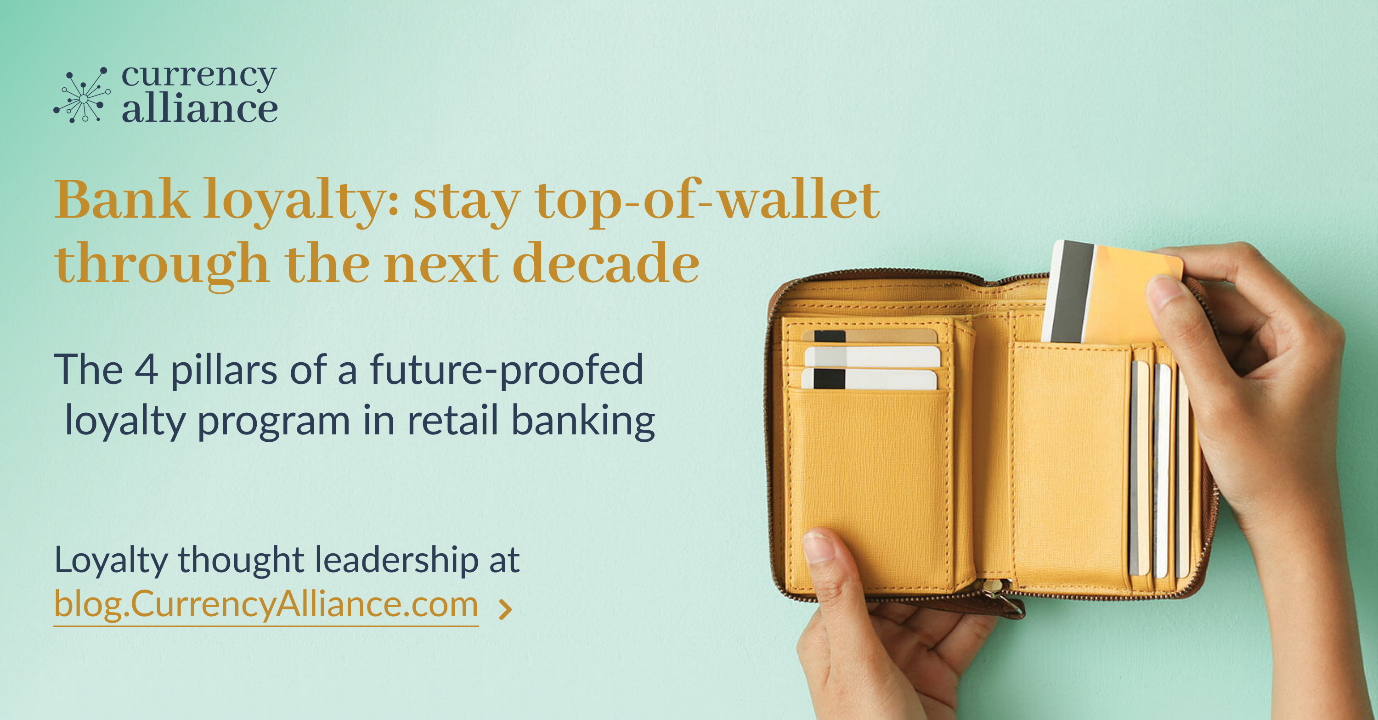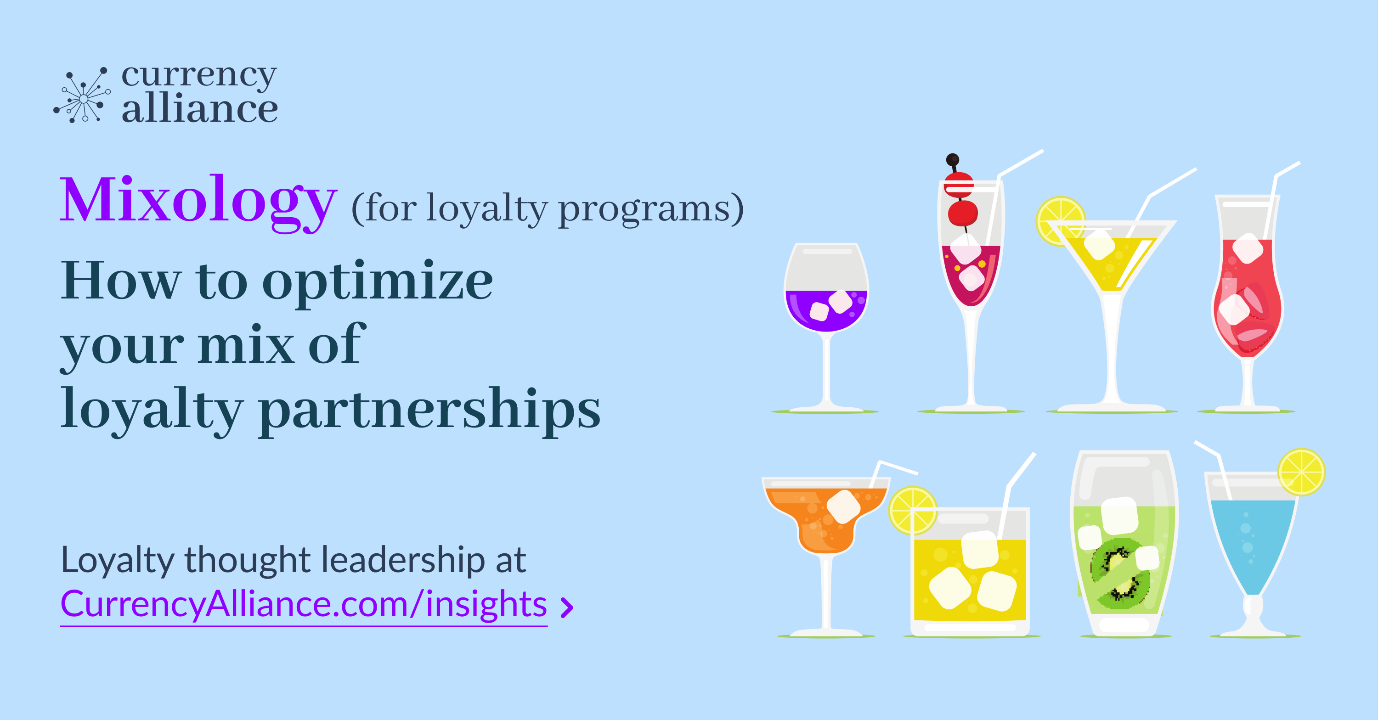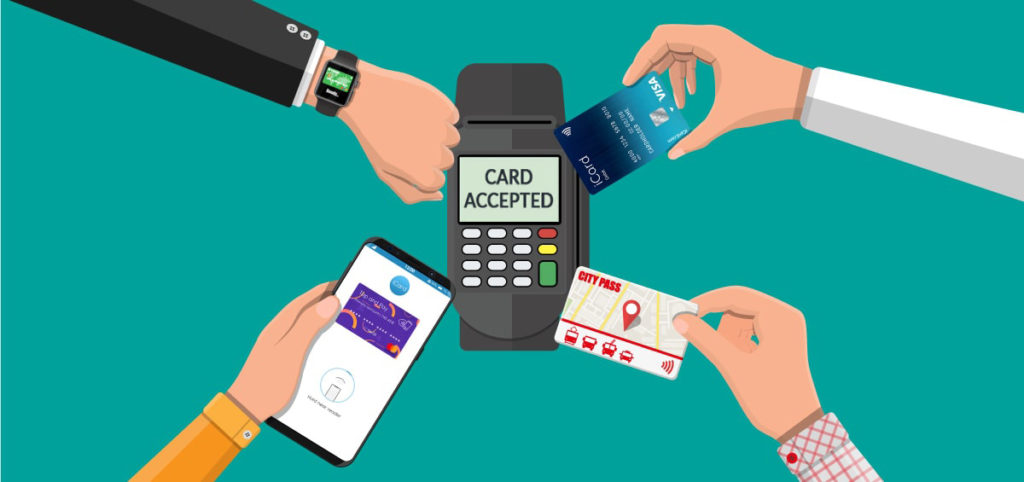Loyalty for neobanks, fintechs and payments businesses

Fintech companies are now embracing loyalty marketing en masse, launching unique propositions in product and service niches where they can be best in class, and pick off valuable customers from traditional banks.
A ‘fintech’ is basically an early-stage company using advanced technology to offer financial products and services in innovative, accessible, and agile ways. These firms deliver solutions like digital payments, online banking, automated investing, and crowdfunding.
Previously, from around 2018 to 2023, the challenger banks and B2C payments startups were giving out a lot of free money as part of their go-to-market strategies but they are paring this back in order to win more customer engagement at lower cost.
Now, they are getting the attention of leading loyalty programs as potential partners. This is because they can create earning opportunities for members in destination markets, and help the travel brands to build out richer profiles on their most valuable customers.
Other niche fintechs and B2B companies are following a similar playbook. They are able to do so effectively thanks to falling technology costs which allow them to launch powerful partner-based loyalty propositions at low effort and low risk.
If you’re enabling people to spend money, whether businesses or consumers, you’re almost certainly capturing incredibly insightful data, with relatively high customer frequency. This can enable improved personalized marketing, laying the foundation for a powerful loyalty program, and likely making you a popular partner to many other loyalty programs.
This is becoming important because the cat is out of the bag.
During 2025, we have noticed that for many brands in this space, their loyalty strategies have become table stakes. In many segments, they have to offer incentives to compete with each other, create greater stickiness, and win market share from established banks and card issuers.
Customers now widely expect to exchange their points into travel, and many other spending categories, as part of the value proposition of their favorite loyalty programs. If you’re leaving this out of your loyalty strategy, in fintech as much as in many other sectors, you’ll soon find your business falling behind.
Fintech challengers’ opportunity to scale through loyalty marketing
New fintech challengers have done well in recent years, as modern technology and regulatory changes like open banking have made it possible for firms to compete for gaps in the market.
These companies have already created as much value as they can with trendier branding, user-friendly apps and slicker functionality for specific financial needs. So now, these new entrants need to find ways to increase market share and then, crucially, retain the customer that they acquire.
This is important in financial services because switching costs are now a lot lower. Also, customers of newer fintech companies probably have less ingrained emotional loyalty than a customer might have for an established bank that they’ve been with for years.
So, any financial services company that acquires a new customer needs to assume it will lose them just as quickly unless they quickly demonstrate additional customer value.
Gaps in the existing market for financial services loyalty programs
The big players in financial services loyalty have been card issuers (chiefly US-based) and established banks.
Card issuers
The best-known operators of such loyalty programs are American Express Membership Rewards, Chase Rewards, and other mostly US-based finservs, which each spend billions of dollars a year on points issuance, mostly funded out of interchange fees.
This significant ongoing investment serves as a good moat for these companies, since customers get tangible value with little effort, and the ability to redeem for aspirational travel.
But these companies’ appeal is not universal. On the launch of a new, premium ‘Ultra’ plan by Revolut, a card issuer, one journalist recently commented:
“Here’s the part that should terrify American Express. While they’re spending a fortune trying to win over 30-year-olds with dining credits, Revolut is busy onboarding under 14-year-olds… By the time these kids turn 18, they’ve been living inside the Revolut ecosystem for years…
“…for €45 a month, it bundles things I actually use: unlimited lounge access (via DragonPass), a Financial Times subscription, WeWork passes, a NordVPN plan, and even Tinder Gold…”
…as well as travel insurance and a global eSIM.
This viewpoint needs some balance. Some young people like Amex’s luxury offering as much as older people, and as this generation matures, the Amex offer will look steadily more appealing by comparison.
Nonetheless, Revolut has created a means for affluent younger people to explicitly identify themselves and provide the opt-in they need to cultivate an ongoing customer relationship. Revolut can then change up their partner mix over time.
Challenger banks
Many established banks’ loyalty programs are terrible and long overdue an upgrade – or are simply non-existent.
European bank loyalty extinction originated in 2017, when legislation in the European Union reduced the interchange fee from 2-2.5% down to 0.3% on credit cards and 0.2% on debit cards. Within one year, over 100 bank-sponsored loyalty programs in Europe disappeared, and many other countries are now introducing similar caps on interchange fees. You can read more on this in our article on loyalty programs in retail banking.
 As a result, customers in many markets are now getting little to no loyalty value from their main banks, creating a window of opportunity for startups – who are now bringing attractive loyalty propositions to market at pace.
As a result, customers in many markets are now getting little to no loyalty value from their main banks, creating a window of opportunity for startups – who are now bringing attractive loyalty propositions to market at pace.
In the past 12 months at Currency Alliance, we’ve had enquiries from over 20 startups and scaleups in the fintech space, across EMEA, the Americas and Asia, seeking to expand partner-based loyalty strategies.
These startups have realised that loyalty marketing is the most capital-efficient tool at their disposal for winning and retaining customer preference in a competitive market.
The economics of loyalty marketing for scaling fintechs
The use of monetary value as part of customer acquisition and retention strategies is well established in banking, but the nature of that value has a significant impact on your ability to influence customer behavior, and ultimately ROI.
In many cases this value has taken the form of ‘free money’: cashback or attractive interest rates. But as the challenger banks, payments and other fintech firms have matured, they have pared these offers back. For some examples:
- when Curve launched, they gave out a percentage in cashback and charged no fees for practically all services; now the cashback is available on only premium cards
- Chase bank is not a startup, but in 2021 they launched a UK-registered entity, and issued 1% on practically all spending as part of their go-to-market strategy. That offer is now only available to customers who spend at least £1500 a month.
The trouble with cashback as an incentive is that it is easy to embrace and often valuable for consumers, but for the brands who fund these offers, it has a high direct cost with uncertain ROI.
Also, the actual cashback sums offered were only moderately appealing unless a small business owner put all their company expenses on a card offering such cashback. In the US, the far wider use of reward credit cards means that 1% cashback is less exciting than 1% in points to most customers, since the points can be exchanged into aspirational travel experiences with a far higher perceived value.
Europe is entirely different in that interchange fees are so low, banks have depended on merchants to fund the rewards. Furthermore, apart from during the short period following the covid recession, customers have been accustomed to earning much more than 1% on their current account interest rate, so less motivated to spend money in the first place.
The fintechs can’t answer this challenge simply by giving out more ‘free money’ as this simply becomes unaffordable.
In both markets, therefore, they had to find a way to compete at lower cost and with greater impact on customer preference – so they turned to rewards, including the use of points.
Tactics for influencing customer behavior with incentives
There are many ways to engage your customers and deliver benefits when they behave in ways that optimize your business.
The first task is to make a long list of actions or behaviors you are trying to influence. This should be a long list and not just the 3-5 obvious actions like ‘spend more money.’ Some might include:
- registering an account – perhaps with more value, the more the profile is complete
- performing 2-3 key actions during the first month so that the customer gets the most from the service, and begins on the path to generating maximum customer lifetime value
- reaching key milestones like a certain level of monthly spend or assets under management. You could also incentivize anniversaries to keep the customer engaged over time
- new customer referrals – which can be small incentives at first, but larger if those new customers also become valuable
- actions which lower your costs. That could include using the lowest-cost channel for customer service, or completing transactions at an optimal time that helps you level volumes, or to achieve volume targets with your suppliers
- participating in a community of your users, by sharing advice and guidance, or encouraging desirable behavior across a larger base of customers
- completing educational or training programs that teach better financial management habits.
Once this list is complete, you can rank it, so the most important actions are at the top. For each completed action, you can determine what that is worth to the business (in economic terms).
For example, an international wire transfer that exchanges $10,000 US dollars into Euros might generate $15 in commissions. How can you encourage the customer to repeat this type of transaction with your business on a regular basis? – would that entail sharing $1, $2 or $5 of those commissions with the customer in the form of loyalty points or a gift card?
When you know how much value to share with customers for each type of action, you can then define the relevant loyalty rules.
*
It’s worth mentioning that the types of incentives can vary depending on your business, goals and objectives.
The most common form of loyalty incentive is to offer points that can later be redeemed for various types of rewards.
I would always recommend loyalty points over cashback as a cost-effective form of incentive. But your customers need something to redeem those points on, and when your ‘product’ is a payment card or bank account, you probably have little to no inventory to offer as rewards.
If you don’t offer points that can accumulate over time, you could also offer discounts on fees when customers achieve certain thresholds.
Or, business partners might be willing to offer their products or services to your customers at a discounted cost.
One of the simplest solutions to this is via gift cards.
For instance, you may be able to buy coffee vouchers with a face value of $3 each, but only pay the coffee chain $1.50 for those cards. If the customer redeems $2 of points on each coffee, they’ll feel they’re getting great value from your points, but you’ll be making a net saving of 33% compared to issuing cashback.
Currency Alliance’s voucher platform has over 4,500 different gift cards to choose from so you can easily build out a broad and varied range of redemptions for your customers.
In fintech specifically, access to ‘insider tricks’ to save money or make more money are always appreciated by customers. You could enable customers that achieve certain results to have access to private training sessions, or give them access to a subscription service that shares news or insights which are complementary to your core business.
All that said, most customers appreciate being recognized, so simple things like saying “Thank you” can often be enough. You could also give them badges that appeal to the customer’s self-esteem.
There are an infinite number of options when designing the loyalty mechanics, but get started with a smaller number that can be implemented quickly and can work best for your business. Hopefully some of the above can help get started.
Merchant funded offers and bundled services
Most challenger banks and payments startups now offer some mix of points and merchant-funded offers as rewards, as well as bundled services.
The ‘Perks’ account offered by Monzo, a challenger bank, appears to rely partly on merchant-funded offers, whereby the merchant effectively uses the bank as advertising space and only incurs a cost when the customer redeems the offer.
For the merchant, that can bring the cost of new customer acquisition via that channel close to zero, if the offer is for a service with little or no direct cost of sale. Monzo and N26, another challenger bank, offer a number of such perks including discounted rail travel, mobility subscriptions and more.
This is also a cost-effective type of reward for the fintech company because these offers cost them close to nothing.
Other types of perks – such as bundled services and vouchers/gift cards – come at a cost whether or not the customer redeems. The N26 Metal account, for instance, comes with bundled insurance, meaning the bank will have to buy the insurance policy on account opening. More ‘snackable’ rewards of this type include free cinema tickets and gift cards.
This can still be a good investment for the bank since the customer comes to regard the bank as a gateway to better overall value. The bank likely only pays 20-60% of the retail price for that service, meaning they should be able to turn a positive ROI on that investment.
Yet both merchant-funded offers and bundled services are limited in their utility and customer appeal, so a few years ago, the tide started shifting towards the use of loyalty points.
The improved ROI of loyalty points over other forms of rewards
The direct cost of issuing points can be as low as zero, if the points expire or the customer never redeems – or if they can be redeemed for rewards with no cost, such as preferential customer service.
But the customer appeal of points can be far greater than offers or bundled services, because they’re a relatively liquid form of value, and easily understood by nearly all customers. The customer can earn those points on their everyday spending, and as long as the bank or payments company has the right partnerships in their loyalty program, the customer can easily find a redemption that has the most meaningful value to them.
In most cases, banks will fund points issuance out of their margins, which adds only modest costs and slows the race to the bottom, compared to cash-based rewards.
But the fintechs can also turn their points into a source of direct profit if it’s funded by the merchants. An example of such a promotion might be that the customer earns 1 point for every dollar spent, but 5 points with a certain partnered merchant. It’s possible that some of Revolut’s ‘Shops’ partnerships, whereby customers can earn up to 20x RevPoints points with 900 different brands, work in this way.
Most merchants are paying 4% to 10% in cashback, affiliate marketing fees, or even more for discounts and Google search. Offering a few points as a merchant-funded incentive will be a lower cost channel of customer acquisition and retention.
For the banks or fintechs, meanwhile, such offers produce overall positive ROI, with higher transaction volumes and memberships, and help to keep payment cards top of wallet.
Loyalty partnership strategies for financial services brands
A key commonality to most of these programs is the ability to exchange or redeem with partnered brands.
Large airline and hotel group loyalty programs are among the most desirable partners for fintechs because they have massive member bases, extending the fintechs’ reach to new customers far and wide. These programs also have among the most emotional sway for members, and they can help the fintech identify younger customers with a taste for luxury lifestyles.
This is a fast-developing trend. Of the new business enquiries that Currency Alliance has had from fintechs during 2025, about half are from firms interested in allowing their points to be exchanged into the programs of airlines and hotel groups.
We can’t reveal who all of these brands are because some of them are still preparing to launch new incentives. But most neobanks or payments startups you can think of are already following this path.
We can, however, talk about some publicly visible examples.
The leading brand in the consumer space here is Revolut which enables customers to exchange their RevPoints out into 30 different travel programs; in 2024 they announced such a partnership with IAG Loyalty, which operates the Avios currency, and in 2025 they announced one with Etihad Guest.
Bilt Rewards issues a card primarily for paying rent, while sharing data with landlords in order that they can optimize their tenancies. This company has been a rapid success story in the industry because both B2B and B2C customers can get a lot of value due to the large sums of money changing hands between all sides of the marketplace. Furthermore, Bilt Rewards can be exchanged out into many leading airline and hotel programs. The Bilt model is now being replicated in many other countries.
AD Capital Markets provides B2B forex services and allows exchange out into Qatar Airways Avios. Partly due to their low costs and partly due to the points value that customers can earn, they’re stealing a lot of forex business away from high street banks.
The program design in many cases is not yet perfect.
Most of the B2C examples are (or will be) premium propositions – where the customer has to pay a subscription fee to get an enhanced service.
This isn’t necessarily a bad thing but if you compare American Express or Chase Rewards: you can earn a lot of points (including a large signup bonus) with most of their free cards or subscribe to a premium card for more perks.
With Revolut, you can earn…
- 1 point per £10 spending as a free member (and exchange 1:1 into Avios)
- …or 10 times that value as a paid member.
That essentially means that the Revolut card yields 10 times less value than (for example) the British Airways American Express Card, while providing the same core service.
Of course, with American Express’s financial muscle, and practically no interchange fees in the UK or Europe, it’s not really a level playing field.
And overall, it’s a positive start by the fintechs. These new programs are expanding quickly. Beyond aspirational travel experiences, they also offer less emotional rewards, such as the ability to redeem points for gift cards or other types of vouchers direct from brands, or via online distribution aggregators.
The widespread utility of these new rewards cards can make them very interesting partners for airlines or hotel groups, as accrual partners or as new customer acquisition channels. This is particularly the case for customers of the premium accounts and cards, who are likely to represent good lifetime value for all partnered brands.
If they continue on this path, some of these challenger banks and payments firms will inevitably come to be not just challengers, but direct competitors to established financial brands in the coming decade.
A present opportunity for fintech loyalty programs
The success of Bilt Rewards and Revolut, etc. has demonstrated that fintech loyalty programs are here to stay.
And like any payments firm, with the right data sharing in place, they can reveal almost unparalleled insight about customer lifestyle preferences, making them hugely attractive partners for travel brands.
Given that many of these companies do not have the deep pockets of established banks, they need to pursue the cutting edge in partner-based loyalty strategy.
This will ensure that every one of their customers can easily get interesting value at the lowest possible costs. It will also give them many angles for competitive differentiation in their value propositions both for partners and consumers.
In the long term, the most successful startups may even build loyalty programs as popular and valuable as those operated by Chase Bank and American Express.
To put your fintech startup or neobank on this path, speak to Currency Alliance, and learn how networks of partners are positively impacting loyalty programs in your industry, and how our low-cost technology can help.






